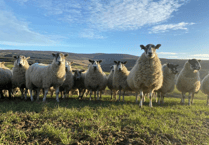An Atlantic grey seal has been photographed feeding on a harbour porpoise for the first time in Manx waters.
The seal was photographed at the Point of Ayre earlier this summer by Gary Weightman, of Vannin Photos, feeding on the tail of a juvenile harbour porpoise.
Gary had been photographing a large group of seals from a distance with a long zoom and caught the individual on camera eating part of the marine mammal.
Manx Whale and Dolphin Watch (MWDW) recognised the tail as that of a porpoise which is unusual behaviour in the waters around the British Isles.
Posting on its website, the MWDW said: ‘Grey seals feeding on harbour porpoise has been documented throughout the northern hemisphere but evidence within the British Isles is limited.
‘Documentation exists of both predation and scavenging. In this circumstance, Gary had been photographing the seals for some time and commented on how peaceful the atmosphere was.
‘There was no sign of chase or attack, suggesting that the porpoise was already dead and the seal had come across the carcass.’

The MWDW says this is the first hard evidence of seals predating on a porpoise carcass although there have been indications previously.
It explained: ‘This is the first sure evidence of a grey seal feeding on a harbour porpoise in Manx waters. However, back in 2018, we came across the flesh and blubber of a porpoise which appeared indicative of grey seal attack.
‘Photographs were sent off to colleagues at the UK Cetacean Strandings Investigation Programme at the time who confirmed these suspicions.’
While seals might look cute, the MWDW is says these photos are a reminder of the predatory power of these marine animals which can be dangerous if provoked.
The MWDW said: ‘This is perhaps a timely reminder that seals are a top predator, with strong jaws and sharp teeth. They may seem cumbersome on land, but in the water they can burst into speeds of 22mph, with a usual swimming pace of 6mph.
‘Seals are opportunistic and will feed on many species of fish, crustacean as well as octopus and squid.
‘People are reminded to keep a distance of 50 metres from seals on land and take photographs at a distance with a long zoom.
‘Seals haul out twice a day at low tide to rest and digest their food and disturbance can cause stress, driving them back into the water before they are ready.’
Grey seals are the larger of the two species found in Manx waters, the other being the common or harbour seal. They spend most of their time out at see but can be found resting in places such as the Ayres or the Sound.




.jpeg?width=209&height=140&crop=209:145,smart&quality=75)